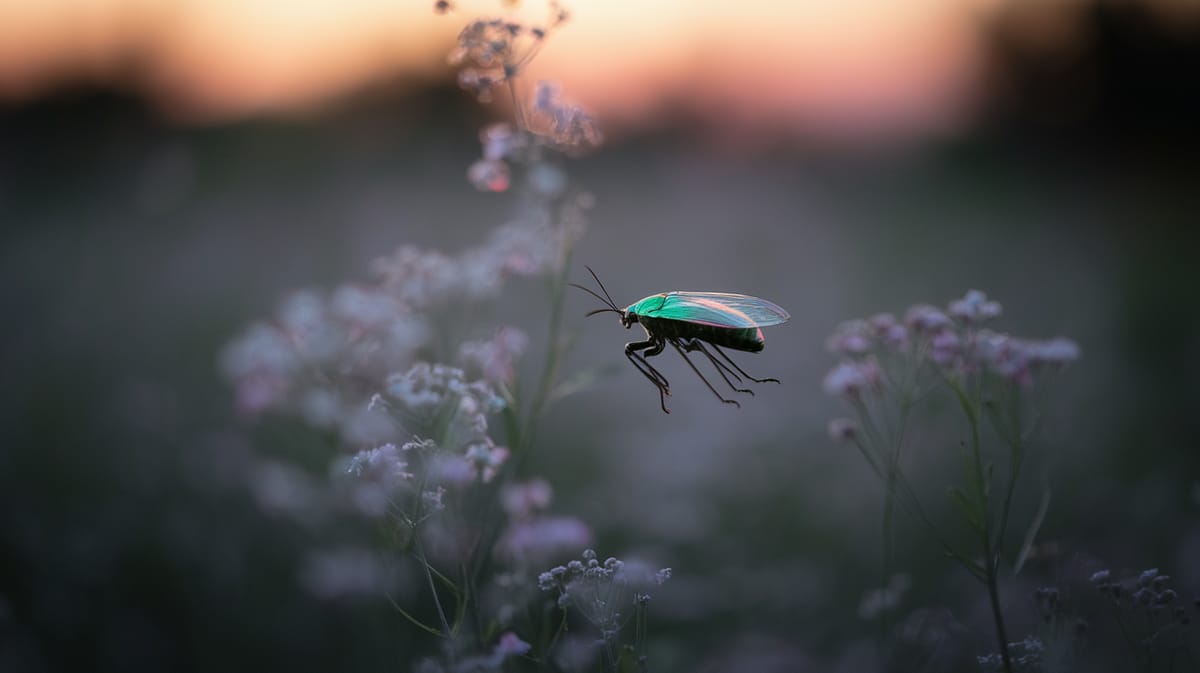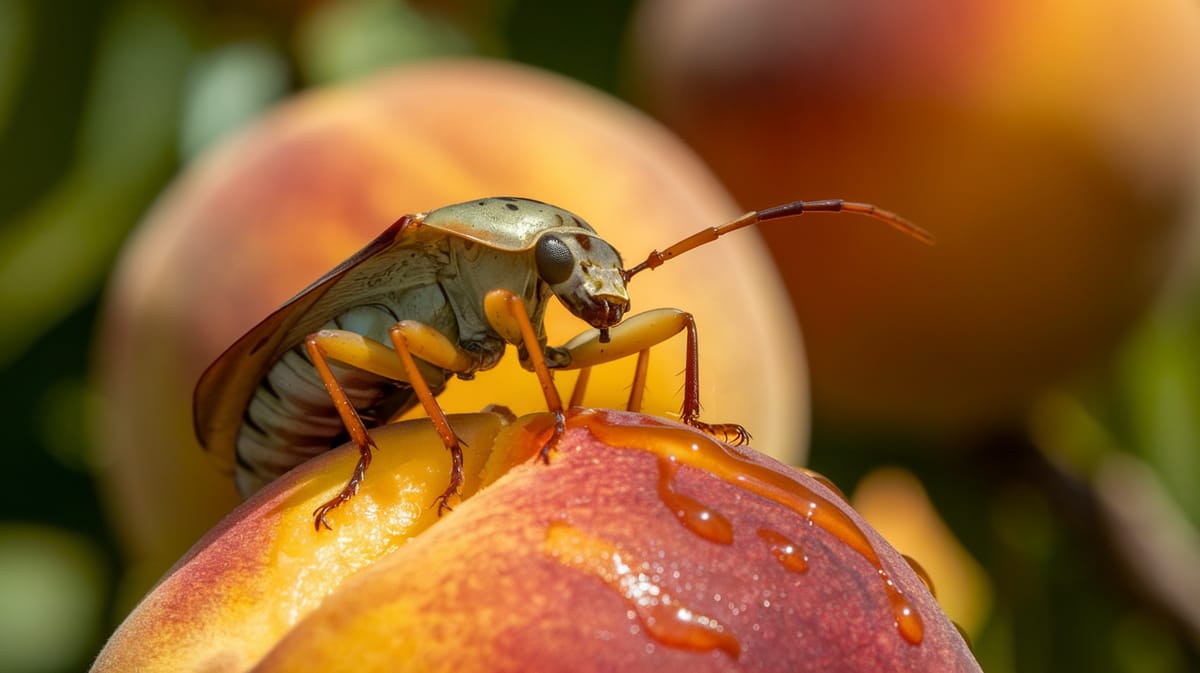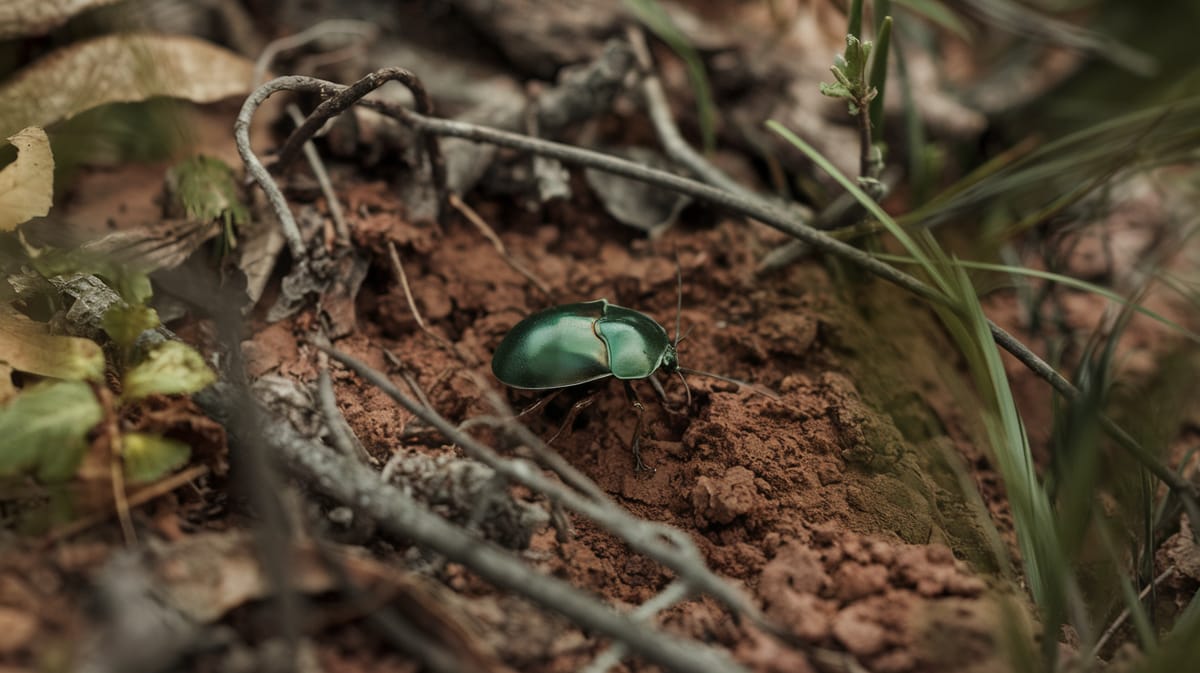June Bug
The June Bug captivates with its nocturnal flights and attraction to lights, playing a crucial role in aerating soil and recycling nutrients. Its larvae, known as grubs, thrive underground, feeding on roots and contributing to soil health.

Key Insights at a Glance
Did You Know?
Taxonomy & Classification
June Bugs are robust beetles with nocturnal habits and a life cycle intricately linked to decomposing organic matter and plant life. Let's understand the evolutionary journey and classification of these remarkable decomposers, herbivores.
Species Richness
The genus Phyllophaga includes over 800 species, mainly found in North America, showcasing their adaptability to various ecosystems.
Evolutionary Adaptation
Originating in the Paleogene period, June Bugs have evolved to thrive in temperate climates, adapting to environmental changes over millions of years.
Lifecycle and Growth
A remarkable journey of transformation from Egg to Adult.
Egg
Female June Bugs lay eggs in soil, where they remain protected until hatching into larvae.
Larva
Grubs feed on roots in the soil, growing significantly and storing energy for future transformation.
Pupa
Larvae undergo metamorphosis in an earthen cell, developing adult features while remaining inactive.
Adult
Adults emerge with fully developed wings ready for mating and are primarily active at night.
Dietary Habits
Primarily a nocturnal herbivore, it munches on plant material using specialized mouthparts suited for chewing leaves and roots.
| DIET TYPE | DESCRIPTION |
|---|---|
| Primary Diet | Mainly feasts on foliage, roots, and flowers from trees and shrubs, especially during warmer months. |
| Secondary Diet | Occasionally consumes decaying organic matter, aiding in nutrient recycling within its ecosystem. |
| Occasional | Rarely targets garden vegetables and fruits, particularly during times of high availability or scarcity of preferred food. |

Behaviour and Adaptations
Discover the fascinating features that equip the June Bug for survival.
Nighttime Foraging
Primarily active at night, June Bugs efficiently search for food in the dark.
Digging Ability
Excellent at burrowing underground, providing safety and moisture access.
Sturdy Exoskeleton
Robust shell protects against predators and environmental hazards.
Ecosystem Impact
Understanding how June Bugs contribute to environmental balance.
Soil Aerators
Larvae burrow through soil, improving its aeration and nutrient mixing.
Food Source
Serve as prey for birds, mammals, and reptiles, supporting biodiversity.
Nutrient Recyclers
Decompose organic matter, returning nutrients to the soil.
Conservation Challenges
Understanding and addressing the major threats to June Bug populations.
Chemical Exposure
Pesticides reduce June Bug numbers, disrupting their life cycle and ecosystems.
Habitat Loss
Urban development and agriculture reduce the natural habitats of June Bugs.
Climate Change
Altered weather patterns affect June Bug reproduction and survival.
Frequently Asked Questions
How long do June Bug live?
June Bugs typically live for about one year. Their life cycle includes egg, larva, pupa, and adult stages. Most of this time is spent underground as larvae. Adults usually emerge in late spring or early summer and have a lifespan of approximately two to four weeks.
What do June Bug eat?
June Bug larvae, known as grubs, feed on roots of grasses and other plants, which can damage lawns and crops. Adult June Bugs primarily feed on leaves, flowers, and sometimes fruits, often causing minimal harm to healthy plants.
Are June Bug poisonous?
June Bugs are not poisonous to humans or pets. They can be a nuisance due to their attraction to lights and potential to damage plants, but they do not pose a direct threat through bites or stings.
Are June Bug endangered?
June Bugs are not considered endangered. They are quite common in many regions, especially in North America. Their populations fluctuate naturally, but they remain abundant and are not currently at risk of extinction.
What do June Bug symbolize?
June Bugs often symbolize the arrival of summer in many cultures. They are associated with the abundance of the season, renewal, and the cycle of life, reflecting their emergence during warmer months and their role in the ecosystem.
Do June Bug bite?
June Bugs do not bite humans. While they have mouthparts designed for chewing leaves, they are harmless to people. Their primary impact is on plants, where they may cause some damage by feeding on foliage.
What color are June Bug?
June Bugs are typically reddish-brown or dark brown in color. Their glossy, hard shells can sometimes have a slightly metallic sheen. The exact shade may vary slightly among different species and individuals.
Does a June Bug have wings?
Yes, June Bugs have wings. They are capable of flying, although their flight can be somewhat clumsy. They often fly toward lights at night, which is a common behavior observed in these beetles.
What does a June Bug look like?
June Bugs are medium-sized beetles, about 0.5 to 1 inch long. They have a rounded, oval body with a hard exoskeleton. Their color is typically reddish-brown or dark brown, and they have six legs and two antennae.
Is a June Bug an insect?
Yes, a June Bug is an insect. It belongs to the order Coleoptera, commonly known as beetles. As insects, they have a three-part body structure (head, thorax, abdomen), six legs, and two antennae, which are characteristic features of insects.
Related Insects
Discover insects with similar characteristics to June Bug - including shared habitats, diets, and taxonomic classifications
Share this profile
Help others discover June Bug
